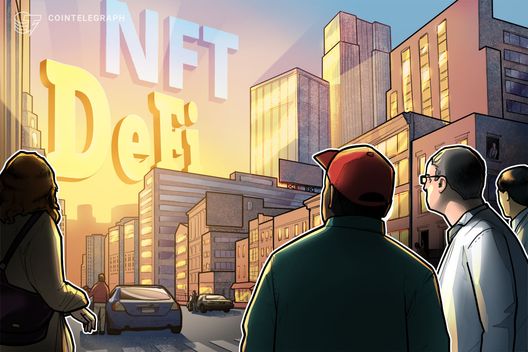

Decentralized Finance (DeFi) experienced a surge in July, driven in part by the growth of tokenized stocks, but a recent report indicates a shift in user activity towards Non-Fungible Tokens (NFTs).
DeFi Growth Fueled by Tokenized Stocks
Locked liquidity on DeFi applications reached a record $270 billion in July, marking a 30% month-over-month increase. This growth was partly fueled by the increasing popularity of tokenized stocks, with active wallets interacting with these assets soaring from approximately 1,600 to over 90,000. Consequently, the market capitalization of tokenized stocks jumped by 220%, signaling the growing traction of real-world assets (RWAs) within the DeFi space.
Binance Research reported a 23.63% month-on-month surge in DeFi total value locked (TVL) in July 2025, attributing it to a broader uptick in crypto market activity and a return to risk-on sentiment spurred by regulatory optimism. Ethereum led the DeFi recovery with notable market share gains.
NFT Market Resurgence
While DeFi liquidity climbed, user attention shifted towards NFTs. Approximately 3.85 million of the 22 million daily active wallets interacted with NFT decentralized applications (DApps) in July, slightly more than those active in DeFi. This shift signifies a potential comeback for NFTs, which are once again capturing public attention after a lull since the 2022 bear market.
NFT trading volumes surged by 96% in July, reaching $530 million. However, the total number of NFT transactions fell by 4%, with only 5 million NFTs changing hands during the month. This trend suggests a shift in buyer behavior, with fewer NFTs being traded but at significantly higher prices. The average NFT price more than doubled, rising from $52 in June to around $105 in July.
A major catalyst was a single whale purchase of 45 CryptoPunks, which sparked renewed interest and lifted floor prices across key collections. Ethereum reestablished itself as the leading NFT chain with a 58% sales surge, while Bitcoin NFTs followed with a 28.1% rise.
Key Players and Trends in the NFT Space
Ethereum-based marketplace Blur drove much of the NFT activity, capturing up to 80% of daily NFT volume, fueled by professional traders and its Blend lending feature. OpenSea remained the most active in daily user count, with approximately 27,000 traders, thanks to its long-tail listings and multi-chain support. Zora, a platform built for creators on the Coinbase-backed Base network, gained momentum with its Layer 2 solution and native ZORA token, which reduced NFT minting costs. Platforms catering to power users and creators saw the most growth during the period.
Major brands continued experimenting with NFTs. Nike.SWOOSH partnered with EA Sports for virtual sneaker drops, and Louis Vuitton, Rolex, and Coca-Cola (China) launched authentication and collectible pilots.
The Intersection of DeFi and NFTs
Data indicates that about 60% of DeFi platforms are exploring integration with NFTs, proposing that owners can leverage their virtual collectibles for loans. This opens up new liquidity channels and investment strategies for users, fostering a more dynamic market. Furthermore, a recent report shows that decentralized marketplaces focused on these assets generated over $10 billion in volume in Q2 2024 alone, suggesting an eagerness for trade and exchange. The integration between cryptographic assets and finance will continue to gain momentum. Research shows that the market cap of tokenized assets could reach $24 trillion by 2027, representing a shift towards more asset-backed financing methods.
Factors Influencing NFT Marketplace Liquidity
Several factors can influence the liquidity of NFTs in different marketplaces:
Conclusion
While DeFi continues to grow, fueled by tokenized stocks and regulatory optimism, the NFT market is experiencing a resurgence, driven by increased trading volumes, rising average prices, and renewed interest from both retail and institutional players. The convergence of DeFi and NFTs presents new opportunities for innovation and growth, with NFTs being increasingly integrated into DeFi platforms for collateralized loans and other financial applications.